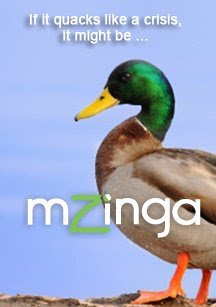
Dave Fleet, a communications professional with a passion for social media, has been writing about the ethics of ghost writing online content for some time. So it was no surprise to see another excellent write up about Guy Kawasaki, creator of Alltop and Truemors, who has three other people writing for his Twitter account. The post includes a direct response from Kawasaki.
Fleet: Do you feel it is misleading to have other people write under your name on Twitter?
Kawasaki: Nope–especially because I don’t hide the fact.
Whether or not it is ethical to ghost write online content is a conversation that continues to sweep across the surface like a tsunami. It often has more power on the back end than the front end. It's one of those topics that I've been meaning to tackle for some time, but my motivation to address what amounts to "no win" discussion frequently wanes with the realization that it seems more futile than fortuitous to do so.
The entire topic seems futile because its based on a perceptional ethical high ground that dismisses a virtual flood of reality. And that reality is a tremendous portion of all communication from individuals was written by someone else. From single line quotes in news releases and brochures to legislative bills and speeches delivered by heads of state.
My personal position is simple enough. I discourage it, but without any of the fervor that sometimes accompanies my colleagues' comments on the subject. I find it too difficult and even hypocritical to judge those who would ghostwrite posts given that my words have fallen under the byline of thousands (except posts and social media accounts), and even people who know me well would be hard pressed to find similarities between this one or that one or that one or this one. But never mind me for a moment. It might be more useful to establish an understanding.
The Three Most Common Positions On Ghosting Posts.
Rampant Acceptance. While it was written almost three years ago, the comment section of a post written by Debbie Weil for the IAOC is pretty revealing. Several writers chimed in with a sympathetic tone for ghostwriting, though several mentioned some expectation that they would be squashed with ridicule and shame based on references from 2005 and earlier (just to show you how long this dusty old topic has been kicked around).
Qualified Acceptance. Bill Sledzik, associate professor in the School of Journalism & Mass Communication at Kent State University, says, with the exception of Twitter and rigid guidelines, that "only the purist assumes ghostwriting is wrong."
Genuinely Unacceptable. Beth Harte warns writers away from the practice because of the presumption that consumers will consider it a fake blog upon discovery. She's not alone. Plenty of people consider it unethical.
The Long And Tired History Of Debate
No one can move forward in a discussion that doesn't account for history. The simple explanation is that early blogging was considered spontaneous broadcast over transplanted professional print, with the earliest participants being regular people rather than professionals.
In some cases, these regular people have since surpassed early adopters with backing of the extensive professional networks, speaking engagement promotions, and ability to game most measurements under the guise that their memes were somehow more important than those originally cooked up by regular people. (I might also note that many of these early personal pioneers consider the very ideal of professional blogging unethical on its face too.)
As such, it's not surprising that regular people set the tone for online presentation. And there decisions were adopted, in part, by the earliest professional participants who decided that it was okay to use blogging as a professional communication platform while accepting the concept that the communication remains pure, unedited, and raw. Of course, the reality is that for most non-communicator professionals, pure, unedited, and raw is a recipe for disaster. After all, it is primary reason there are multiple professions built around communication — marketing, advertising, public relations, real time, whatever.
In other words, it's not necessarily practical for every online participant to craft their own message or pen their posts on their own. Thus, the medium became less associated with spontaneous broadcast and more associated with planned communication, enough so that some people consider every post to be critical to personal and corporate branding. So, allowances were made to have professionals vet the content, edit the copy, and otherwise polish it up much like many letters, emails, press release quotes, and other collateral.
As soon as these editing allowances came into play, so too did the many shades of gray that encompass what is often presented as a black and white issue that asks "is ghostwriting posts ethical or not, pick one."
It's impossible to pick one with any moral and ethical certainty, given that "ghostwriting" has been defined as everything from casual edits and complete rewrites to written with review and unapologetic adoptions of an entire persona a la C.D. 'Charlie' Bales. And that said, I recognize that no one will ever agree on where to draw the line and it's likely most lines are situational.
The Bottom Line On Ghostwriting Posts.
Personally, I discourage ghostwriting posts, specifically the "written with review" or "unapologetic adoption of an entire persona" solutions, and consider it a step down from that to think ghostwriters are working for people on Twitter, which is even closer to a broadcast medium and often solicits representative conversation much like comments. However, I see it this way not because it's unethical as much as it's not needed, when the only apparent benefit to do so is being ever present.
However, I am not surprised Kawasaki uses ghostwriters. His social media strategy is a system and has always been a system. So while it would be bothersome if one of his ghostwriters was singing the praises of authenticity, disclaimer or not; I'm not in a position to question his intent. Only he (and Bales) can do that.
So, is that the bottom line? Not exactly.
“This above all: to thine own self be true, and it must follow, as the night the day, thou canst not then be false to any man.“ — William Shakespeare




























